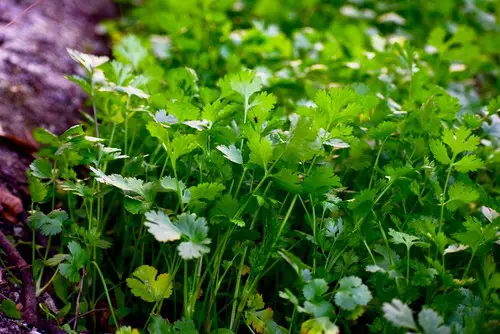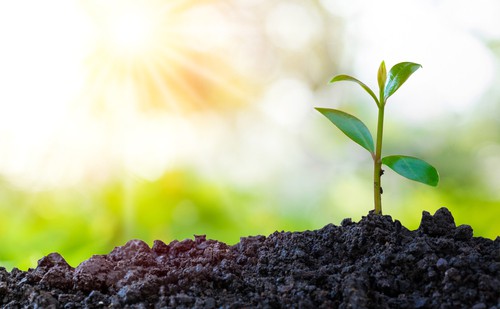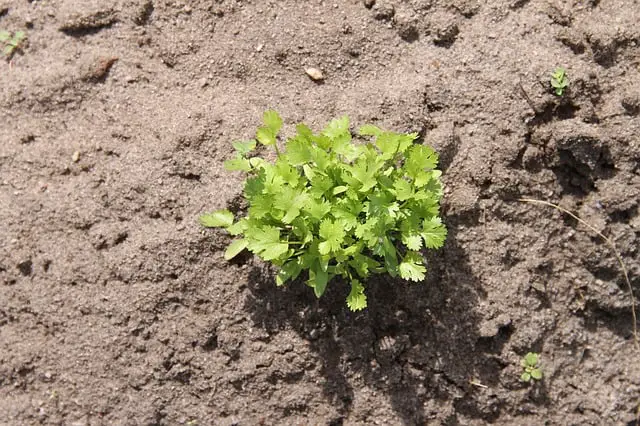Cilantro is a popular herb used in many dishes around the world. However, it can be frustrating when your cilantro plant starts to die, and you’re not sure why. Understanding the reasons behind your cilantro plant dying can help you take the necessary steps to save it.
Identifying the symptoms of a dying cilantro plant is the first step in determining the cause of the problem. Yellowing leaves, wilting, and drooping are common signs that your cilantro plant is not doing well. Once you have identified these symptoms, you can start to look for the underlying causes of the problem.
Preventive measures and solutions are available to help you keep your cilantro plant healthy. Proper watering, adequate sunlight, and the right soil conditions are essential for the successful growth of cilantro. With the right care, you can enjoy fresh cilantro in your dishes for months to come.
Key Takeaways
- Understanding the symptoms of a dying cilantro plant is crucial to saving it.
- Proper watering, sunlight, and soil conditions are essential for growing cilantro successfully.
- Preventive measures and solutions can help you keep your cilantro plant healthy.
Also see:
Understanding Cilantro Plant

Cilantro as an Annual Herb
Cilantro is a popular herb that belongs to the Apiaceae family. It is commonly used in various cuisines around the world, including Mexican, Indian, and Thai. Cilantro is an annual herb, which means it completes its life cycle in one year. It grows best in cool weather and prefers well-drained soil with a pH range of 6.2 to 6.8.
Cilantro is known for its distinctive flavor and aroma. The leaves of the cilantro plant have a citrusy, slightly sweet taste, while the seeds have a warm, spicy flavor. Cilantro is also a rich source of vitamins and minerals, including vitamin A, vitamin C, and iron.
Varieties of Cilantro
There are several varieties of cilantro, each with its unique characteristics. The most common variety is the Coriandrum sativum, which is also known as the “calypso” or “leisure” cilantro. This variety has large, dark green leaves and a strong flavor.
Another popular variety is the “slow bolt” cilantro, which is slower to flower and produce seeds than other varieties. This makes it an ideal choice for gardeners who want to harvest fresh cilantro leaves for an extended period.
Other varieties of cilantro include the “confetti,” “delfino,” and “santo” cilantro. Confetti cilantro has finely cut leaves and a milder flavor, while delfino cilantro has delicate, feathery leaves and a citrusy taste. Santo cilantro is a slow-bolting variety with large, flat leaves and a strong flavor.
Identifying Symptoms of a Dying Cilantro Plant
Cilantro is a popular herb used in many dishes, but it can be a challenge to grow. If you are experiencing issues with your cilantro plant, it may be dying. Identifying the symptoms of a dying cilantro plant is the first step in saving it.
Wilting and Drooping
One of the most common symptoms of a dying cilantro plant is wilting and drooping. This can be caused by a lack of water, too much sun, or root rot. If the soil is dry to the touch, the plant may need more water. On the other hand, if the soil is wet and the leaves are turning yellow, the plant may be suffering from root rot.
Yellowing Leaves
Yellowing leaves are another symptom of a dying cilantro plant. This can be caused by a lack of nutrients, overwatering, or pests. If the leaves are turning yellow and falling off, the plant may need more nutrients. If the leaves are yellow and spotted, the plant may have a pest infestation.
Stunted Growth
Stunted growth is another symptom of a dying cilantro plant. This can be caused by a lack of nutrients, overwatering, or poor soil quality. If the plant is not growing as it should, it may need more nutrients or better soil.
Cilantro Plant Dying – 4 Common Problems

Cilantro, also known as coriander, is an herb that is commonly used in cooking. While it is a relatively easy plant to grow, it can be frustrating when it starts to die. There are several reasons why cilantro plants may be dying, including watering issues, soil and nutrient problems, light and temperature factors, and pest and disease issues.
1. Watering Issues
One of the most common reasons why cilantro plants die is due to watering issues. Overwatering can cause root rot, which can quickly kill the plant. On the other hand, underwatering can cause the plant to wilt and eventually die. It is important to water cilantro plants regularly, but not too much or too little.
2. Soil and Nutrient Problems
Soil and nutrient problems can also cause cilantro plants to die. If the soil is too compacted or doesn’t drain well, it can cause the roots to suffocate.
Additionally, if the soil doesn’t have enough nutrients, the plant may not be able to grow properly. Nitrogen and potassium are two key nutrients that cilantro plants need to thrive. It is important to ensure that the soil has the right pH level, as well.
3. Light and Temperature Factors
Cilantro plants require a moderate amount of sunlight to grow properly. Direct sunlight can cause the plant to dry out, while too little sunlight can cause it to become weak and spindly.
Additionally, hot weather can cause cilantro plants to wilt and die. It is important to ensure that the plant is in a location where it can get the right amount of sunlight and is not exposed to extreme temperatures.
4. Pest and Disease Issues
Pests and diseases can also cause cilantro plants to die. Aphids, a common pest that feeds on the sap of plants, can cause the leaves to curl and turn yellow. Root rot, a fungal disease, can cause the roots to rot and the plant to wilt.
Additionally, a pest infestation or disease can weaken the plant and make it more susceptible to other problems. It is important to keep an eye out for any signs of pests or diseases and take action quickly if they are detected.
Preventive Measures and Solutions
1. Proper Watering
Cilantro plants require regular watering to maintain their health. Overwatering can lead to root rot, while underwatering can cause the plant to wilt and die. It is important to water the plant when the top inch of soil feels dry to the touch.
The amount of water required may vary depending on the climate, soil type, and location of the plant. In general, it is recommended to water the cilantro plant deeply once a week, and more frequently during hot and dry weather.
2. Optimal Soil and Fertilizer Use
Cilantro plants prefer well-draining soil that is rich in organic matter. The soil should be moist but not waterlogged, as excess moisture can lead to root rot. It is recommended to use a good quality compost to improve the soil’s nutrient content and drainage.
Fertilizer can also be used to provide the plant with essential nutrients. A balanced fertilizer with equal amounts of nitrogen, phosphorus, and potassium is ideal for cilantro plants.
3. Ideal Light and Temperature Conditions

Cilantro plants require bright but indirect sunlight to thrive. They prefer temperatures between 50 to 85 degrees Fahrenheit. If the temperature gets too hot, the plant may bolt and produce flowers instead of leaves.
If the temperature drops below 50 degrees Fahrenheit, the plant may become dormant and stop growing. It is important to provide the plant with partial shade during the hottest part of the day to prevent it from drying out.
4. Pest and Disease Management
Cilantro plants are susceptible to a variety of pests and diseases, including aphids, spider mites, and fungal infections. To prevent these problems, it is important to keep the plant healthy and stress-free.
This can be achieved by providing the plant with optimal growing conditions, such as proper watering, soil quality, and sunlight. If the plant does become infested with pests or infected with a disease, it is recommended to use natural remedies such as spraying the plant with a mixture of soap and water or using neem oil.
Insecticidal soap can also be used to control pests. It is important to remove any affected leaves or stems to prevent the problem from spreading.
Growing Cilantro Successfully
Cilantro is a popular herb that is widely used in cooking due to its unique flavor and taste. However, growing cilantro can be a bit tricky, and many people struggle to keep their cilantro plants alive. In this section, we will discuss how to grow cilantro successfully.
1. Seed Germination and Transplanting
Cilantro is usually grown from seeds, and it is important to ensure that the seeds are of good quality. To germinate cilantro seeds, they should be planted in a potting mix that is well-draining and contains organic matter. The seeds should be planted about ¼ inch deep and should be watered regularly. Cilantro seeds typically germinate within 7-10 days.
Once the cilantro seedlings have grown to a height of about 2 inches, they can be transplanted into a larger pot or into the garden. When transplanting, it is important to ensure that the plants are spaced at least 6 inches apart to allow for proper growth.
2. Cilantro Plant Care
Cilantro plants prefer full sun to partial sun with afternoon shade. They require frequent watering, especially during hot weather. It is important to ensure that the soil is well-draining to prevent root rot.
Mulching around the base of the plants can help to retain moisture and keep the soil cool. Cilantro plants also benefit from regular fertilization with a balanced fertilizer.
3. Harvesting and Usage
Cilantro plants typically start flowering after about 6-8 weeks of growth. Once the plant has started flowering, the leaves will become bitter and lose their flavor. Therefore, it is important to harvest the leaves before the plant starts flowering.
To harvest cilantro leaves, simply cut off a few leaves from the plant as needed. The leaves can be used fresh in cooking or can be dried for later use. Cilantro leaves are commonly used in Mexican, Indian, and Thai cuisine.
Conclusion

There are several reasons why cilantro plants may be dying. Overwatering or underwatering, pest infestations, root rot, and fast-draining soil are some of the most common causes of cilantro plant death. It is important to ensure that the cilantro plant is receiving the right amount of water, especially during the summer months when the soil dries out faster.
If the cilantro plant is in a pot, it may require more frequent watering than if it is planted in the garden. Sandy soil is not ideal for cilantro, as it drains too quickly and can cause the plant to wilt. Adding organic matter to the soil can help retain moisture and improve soil quality.
It is also important to monitor the leaves of the cilantro plant for any signs of yellowing or browning, as this can be a sign of overwatering, underwatering, or a pest infestation. If root rot is suspected, it may be necessary to remove the affected plant and start fresh with a new one.
Overall, with proper care and attention, cilantro plants can thrive and produce delicious leaves and seeds. By following the tips provided in this article, gardeners can ensure that their cilantro plants remain healthy and vibrant.
Frequently Asked Questions
How can I revive a wilted cilantro plant?
If your cilantro plant is wilting, there are a few things you can do to revive it. First, make sure the plant is getting enough water. Cilantro needs about an inch of water per week, and may need more during hot weather. If the soil is dry, water the plant deeply and make sure the excess water can drain away.
If the plant is in a pot, make sure the pot has drainage holes. Another possible cause of wilting is too much sun. Cilantro prefers partial shade, so move the plant to a shadier spot if it’s in direct sunlight.
Why is my cilantro wilting in the fridge?
Cilantro is a delicate herb that doesn’t store well in the fridge. If your cilantro is wilting in the fridge, it’s likely because it’s too cold and the leaves are getting damaged.
To keep cilantro fresh, store it in a jar of water on the counter, or wrap it in a damp paper towel and put it in a plastic bag in the fridge. Make sure to use it within a few days.
Does cilantro die after flowering?
Cilantro is an annual herb that will eventually die after flowering. However, you can prolong the life of your cilantro plant by pinching off the flowers as soon as they appear.
This will encourage the plant to produce more leaves and delay the flowering process. If you want to harvest cilantro seeds (also known as coriander), let the flowers mature and turn brown before collecting the seeds.
What are some tips for growing a healthy cilantro plant?
To grow a healthy cilantro plant, make sure it’s getting enough water and partial shade. Cilantro prefers well-draining soil, so add compost or other organic matter to improve the soil’s texture and fertility.
Fertilize the plant every 2-4 weeks with a balanced fertilizer. Pinch off the flowers as soon as they appear to encourage more leaf growth. Finally, make sure to harvest the leaves regularly to keep the plant from getting too tall and leggy.
Why are my cilantro leaves curling?
Curling cilantro leaves can be a sign of stress, such as too much sun or lack of water. Make sure the plant is getting enough water and partial shade. If the soil is dry, water the plant deeply and make sure the excess water can drain away.
If the plant is in a pot, make sure the pot has drainage holes. Another possible cause of curling leaves is pests, such as aphids or spider mites. Check the leaves for signs of infestation and treat with an appropriate insecticide if necessary.
Is cilantro difficult to keep alive?
Cilantro can be a bit finicky, but it’s not overly difficult to keep alive if you provide the right growing conditions. Cilantro prefers partial shade and well-draining soil, and needs about an inch of water per week.
Pinch off the flowers as soon as they appear to encourage more leaf growth. If you’re growing cilantro in a pot, make sure the pot has drainage holes and use a high-quality potting mix. With a little care, you should be able to grow a healthy cilantro plant.

Hey, I’m Lisa and I’ve been an avid gardener for over 30 years. I love writing, talking and living in the garden! Feel free to connect with me on my socials below


